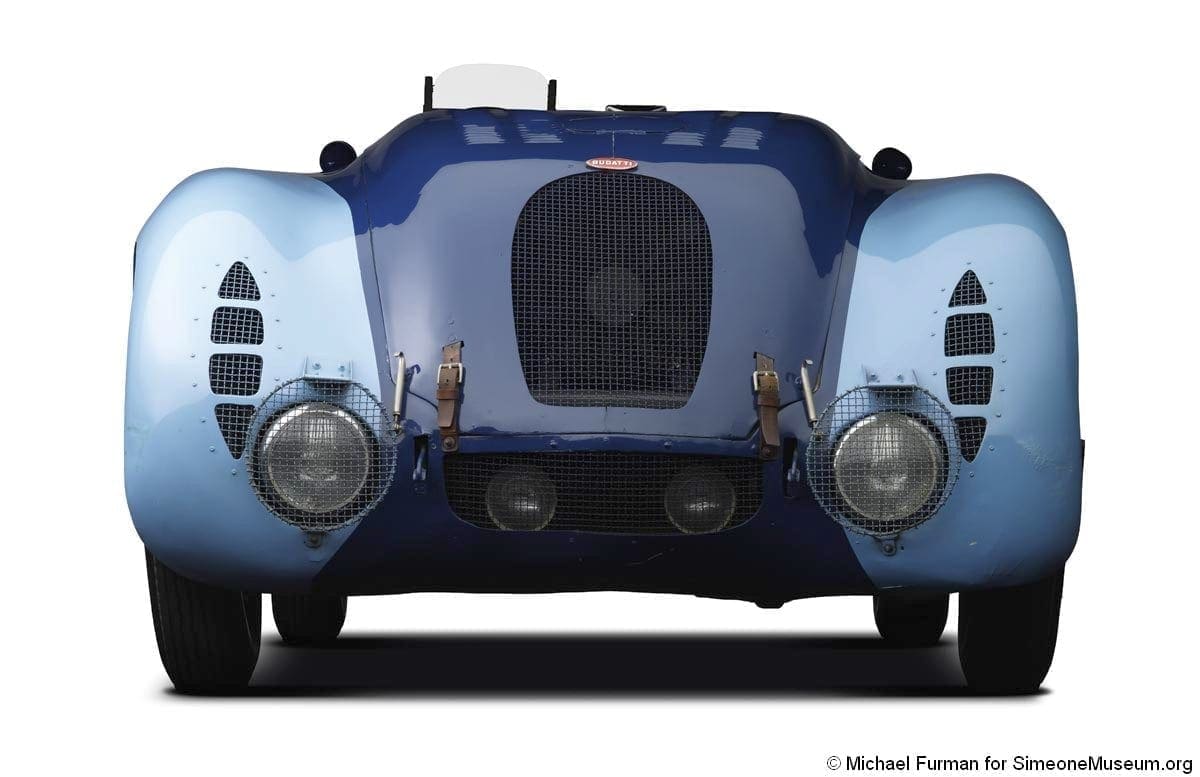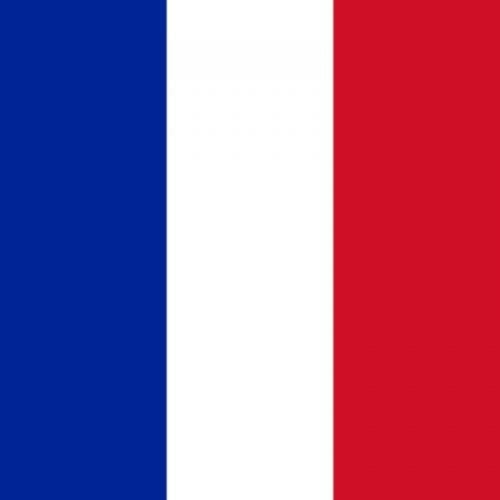Our car won the 1937 Le Mans race and later set many land speed records. They built only 3, and this is the only one which still exists.
THESE CARS
In June 1936 the Automobile Club of France Grand Prix allowed the participation of “Grand Touring Cars.” This category included their definition of a sports cars. A few months before that Bugatti designed a special racing type 57S engine with a lighter crankshaft. They called it the 57G. A car with an unusual streamlined all enveloping body and 57G engine was tested on June 7, 1936 at Montlhéry. They sometimes referred it to as “the aerodynamic mule” which became the prototype of the three 57G Tanks.
Our library has the handwritten Bugatti factory dyno and modification test book for the sports and racing cars of that era. They set lap records during this testing and they assembled the two other Tanks days before the Grand Prix of the Automobile Club of France for sports cars held at Montlhery. Our car easily wonnthe race, going at an average of 125.228 km/h for just under 8 hours, and it also made record setting times that day.
One week later, on July 7, at the Grand Prix de la Marne held at Rheims, Wimille again won in our 57G at an average of 140.245 km/h. In June 1937 with Benoist, he won the 24 hours of Le Mans, the first time a Bugatti had ever prevailed in a major sports car race. Because of certain external features it is clear to automotive historians, including Pierre-Yves Laughier who deduced that all these victories were with the same car, the so-called aerodynamic mule. Laughier in his book, Bugatti 57 Sport outlines the details by which he comes to this conclusion.
He quotes an interesting excerpt from Roger Labric about the day they established the international records with the 57G in 1936. The plan was to attack I
These records, set on October 10, 1936, coincided with the annual Paris Automobile Show. It was here that they placed the car on a stand and exhibited with its prizes for the two previous victories. Laugier writes “that car was, in fact, the prototype ‘aerodynamic mule’” which took part in the Montlhéry trials. There’s no trace of the other two 57G Tanks at those trials in June. This might explain why the mule was better prepared for a longer time than the two others and why it won all the races in which it took part.
This winning car is identifiable by certain details in the body different from the others. It survived because following this race because Mr. Bugatti kept it in his small museum at Molsheim. He also notes they lost the second car sometime around the end of 1936, and the third car which had to drop out of Le Mans in 1937, raced again in Mancelle, then it disappeared. They later cloistered our car in Bordeaux.
A factory document dated February 18, 1941 describes the Bordeaux storage along with the Atlantic Coupe chassis 57454. It would appear that they fit the Tank with a different engine because they describe a supercharger in the document.
When she first appeared the following excerpt from the December 1936 issue of Actualite Automobile is most evocative,
“Bugatti wins the 24 hours international record and six other international records. Wimille, Williams
OUR CAR
This car is the “aerodynamic mule,” the sole surviving 57G Tank. Apparently because of concerns they might confiscate it as the Germans marched through France, in 1940 they removed it from the Molsheim Museum and hidden in Bordeaux. The car overturned on the way and suffered damage to the hood. They later restored it back at the factory in-house, and a workman proudly painted, “Benoist” and “Wimille” on the fender.
Information gleaned from our Bart Loyens and Gene Cesari’s show shows that pioneering European car dealer Jean DeDobeleer could somehow extract the
After some negotiations, he sold it to Colonel Eri Richardson in 1968. This was the best thing that could have happened to the car. This is true since Fritz Schlumpf desperately wanted it, but his meager offers were not accepted by Cesari. For several years thereafter Richardson devoted extensive efforts to bringing it to original condition. As far as I can tell from the correspondence, there were three trips to the remains of the Bugatti factory, which was still in existence, for Richardson to bring back valuable goodies. He retrieved the original tachometer, the special Bugatti carburetor, (of which only a few ever existed), the unique head with three drives coming out of the rear (two tachometers and one for the center magneto drive), the oil cooler, and a variety of other bits and pieces which could have only belonged to this car, since by then the two other Tanks were long gone.
Convinced that he now had all the original car, except for the block which came from a passenger car, Richardson set about a meticulous and sympathetic restoration with an uncompromising commitment to originality. Colonel Richardson, not a wealthy man, devoted an extensive amount of time and a great percentage of his resources to the historical appreciation and refurbishment of his prize. Years later succumbing to a big offer he sold the car to Bugatiste extraordinaire Uwe Hocke, and it finally ended up with Nicholas Seydoux.
This was a car I always lusted for. It is the only existing Bugatti sports car to win a major race, notably Le Mans. In 1939, a different one-off Tank also won at Le Mans but the car was destroyed in a tragic accident which took Jean Bugatti’s life. I had read about the car in contemporary French magazines, but never dreamed it would become available. In the meantime I had a non-racing Ferrari 212 Touring Barchetta on a long chassis. The Barchetta is one of the most beautiful designs ever and the archetype of the 1950s sports racer. Henry Ford Jr. ordered the car and allegedly formed the dimensional model for the 1955 Thunderbird. It languished at Ford styling for some time, then purchased by Dick Merritt when he worked there, and later ended up with me with less than 9000 miles on the clock. French collector, Henry Chambon took a liking to this car and, shepherded by a dear friend Lukas Huni expressed his interest. I knew of the Tank’s existence and I knew that Seydoux may sell, so we effected a three-way swap in which Chambon bought the Tank and I traded the Ferrari to him.
I have never been happier with a car. It runs smoothly, has great pickup, its style is radical but significant, and its history his unblemished. We’ve had it up the hill at the Goodwood Festival of Speed, it was on the lawn at the Pebble Beach where it won the Pebble Beach Trophy. It has appeared at many shows, always attracting a great deal of attention wearing a presentable 1960s restoration.

All the existing records had been broken and all the times cited above have never been exceeded in this class of international records.
Roger Labric




























